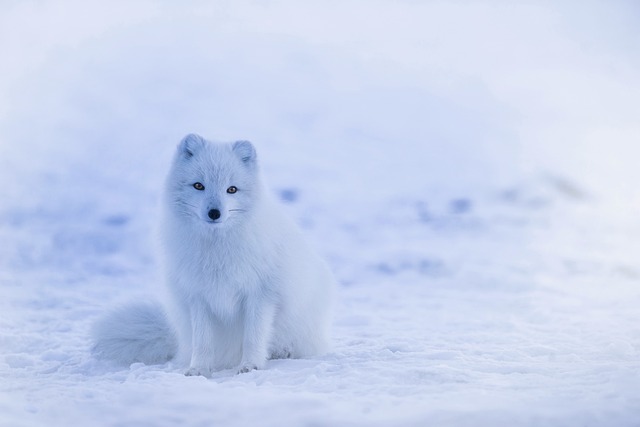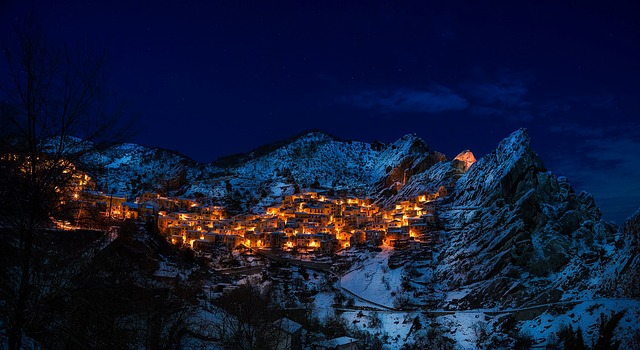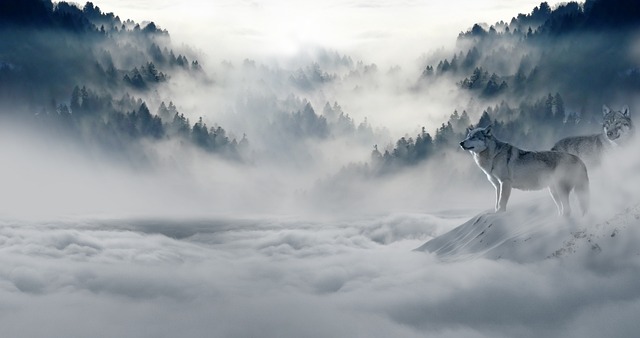As the crisp air and shorter days of winter settle in, there’s no better time to cozy up with a pen and paper, ready to delve into the world of frosty storytelling. From enchanted snow-scapes to heartwarming winter traditions, this season offers a wealth of inspiration for writers of all genres. So, whether you’re an aspiring novelist or a seasoned wordsmith seeking a creative boost, grab a cup of hot cocoa, sit by the crackling fire, and join us as we explore a winter wonderland of writing prompts that will ignite your imagination and make this chilly season a captivating journey for your readers.
Contents
- Embrace the Winter Chill: Unleash Your Creative Writing Skills With Frosty Storytelling
- Unveiling the Power of Winter Scenes: Inspiring Ideas for Your Snowy Narratives
- Fire up Your Imagination: Crafting Compelling Characters in Winter Tales
- From Snowflakes to Plot Twists: Creating Captivating Story Arcs in Winter Settings
- Finding Warmth in Cold Words: Evoking Emotions with Descriptive Language in Wintertime Stories
- Winter Mysteries Unveiled: Engaging Readers with Intriguing Winter Story Prompts
- Unleashing the Magic of Winter: Incorporating Fantasy Elements into Snowy Storylines
- Frequently Asked Questions
- Concluding Remarks
Embrace the Winter Chill: Unleash Your Creative Writing Skills With Frosty Storytelling
Winter is a magical season that evokes tales of wonder and excitement. What better way to fully embrace the winter chill than by unleashing your creative writing skills with frosty storytelling? Unleash the power of your imagination and transport yourself and your readers to a world filled with snow-capped mountains, sparkling icicles, and crackling fireplaces. With a blank page as your canvas, let the beauty and mystique of winter inspire your words and captivate the hearts of your readers.
Frosty storytelling allows you to explore the wonders of the winter season through the power of words. Here are some ideas to kickstart your imagination and infuse your stories with the essence of winter:
-
Embrace the serenity: Paint a vivid picture of a peaceful winter landscape, describe the stillness in the air, and create an atmosphere of tranquility that allows your readers to immerse themselves in the scene.
-
Play with contrasts: Highlight the stark contrast between the warmth of cozy indoor settings and the frigid temperatures outside. Explore the emotions and contrasting experiences of characters as they navigate the harsh winter elements.
-
Unleash the power of nature: Infuse your storytelling with the awe-inspiring forces of nature during wintertime. Whether it’s a snowstorm, a howling wind, or the crackling sound of ice breaking, let the elements enhance the drama and intensity of your narrative.
Unveiling the Power of Winter Scenes: Inspiring Ideas for Your Snowy Narratives
Winter scenes have an enchanting power that can breathe life into your narratives, evoking a sense of beauty and wonder. If you’re looking for inspiration to enhance your snowy storytelling, we’ve got some ideas that will ignite your imagination and transport your readers to a captivating winter wonderland.
1. Utilize the magical atmosphere: Winter scenes offer a unique opportunity to explore the ethereal ambiance of the season. Describe the crisp air that tickles your protagonist’s nose or the soft crunch of snow beneath their feet. Use vivid imagery to paint a picture of swirling snowflakes dancing in the moonlight or the peaceful silence that envelops a snow-covered landscape.
2. Convey emotions through the cold: The frigid temperatures create an atmospheric backdrop that can intensify the emotional journey of your characters. Describe how characters struggle against the biting wind, their breath forming delicate clouds, or how the icy landscape mirrors their feelings of isolation or resilience. Show how the cold can test their mettle or serve as a catalyst for personal growth.
Fire up Your Imagination: Crafting Compelling Characters in Winter Tales
Welcome to the whimsical world of winter storytelling! In this enchanting journey, where frosty landscapes and snowflakes dance in the night sky, the key to captivating your readers lies in crafting truly memorable characters. Whether you are delving into a heartwarming romance or a thrilling adventure, these tips will help you bring your winter tales to life.
1. Delve into their past: Characters that have a rich backstory are often the most intriguing. Explore their childhood memories, their fears, and their dreams. Uncover the little details that shaped their personalities and motivations. This depth will allow readers to connect with your characters on a deeper level and make their journey all the more compelling.
2. Embrace the complexity: Just like the intricate patterns formed by frost on a windowpane, your characters should have layers. Give them flaws and strengths, conflicting feelings and desires. Allow them to evolve throughout your story, responding authentically to the challenges they face. By showing their vulnerability and growth, you’ll create characters that are not only relatable, but also captivating to follow.
From Snowflakes to Plot Twists: Creating Captivating Story Arcs in Winter Settings
Winter settings provide a magical backdrop for captivating story arcs, weaving a sense of wonder and mystery into the narrative. As the snowflakes softly fall from the frost-covered skies, they set the stage for unexpected plot twists that leave readers on the edge of their seats. Embracing the winter scenery allows writers to tap into the beauty and chilling atmosphere that comes with the season, elevating their storytelling to new heights.
To create a captivating story arc in a winter setting, it is crucial to pay attention to the details. Describe the frost-kissed landscapes in vivid imagery, painting a picture that transports readers into a world of swirling snowdrifts and icy enchantment. Utilize the power of sensory language to evoke the feeling of the crisp, biting cold on the characters’ skin, the crunch of boots on freshly fallen snow, and the faint scent of pine needles in the air. By engaging the readers’ senses, you immerse them in the winter setting, making the story come alive.
Additionally, a compelling winter story arc often thrives on unexpected twists and turns. Play with the readers’ expectations by introducing surprising plot developments that disrupt the tranquil winter setting. Perhaps a character uncovers a long-lost secret buried beneath layers of snow, or a sudden blizzard strands the protagonists in an isolated cabin, forcing them to confront their deepest fears. These unexpected events add an element of suspense and intrigue, keeping readers engaged and eager to uncover what lies around the next snow-covered corner.
In conclusion, creating captivating story arcs in winter settings requires attention to detail and an ability to embrace the unexpected. By employing descriptive language and infusing the narrative with unexpected twists, writers can transport readers to a world where snowflakes hold secrets and plot twists hide beneath the frosty surface. So bundle up, grab a warm cup of cocoa, and embark on a wintery adventure that will leave readers longing for more.
Finding Warmth in Cold Words: Evoking Emotions with Descriptive Language in Wintertime Stories
When it comes to wintertime stories, evoking emotions in readers is key to creating a captivating narrative. Descriptive language serves as the perfect tool to transport readers to a world filled with warmth and wonder. Through carefully chosen words and vivid imagery, authors can bring the frigid winter landscape to life and evoke a range of emotions in their audience.
By incorporating descriptive language in wintertime stories, authors have the power to make readers feel a sense of coziness, despite the cold. Imagery that focuses on the crackling sound of a roaring fireplace, the softness of a warm blanket, or the comforting aroma of freshly baked cookies has the ability to create a feeling of comfort and warmth. Additionally, describing the contrasting beauty of frost-kissed trees or the sparkling brilliance of ice-covered landscapes can captivate readers and evoke a sense of awe and wonder. By using sensory details, such as the sharp bite of the cold air or the gentle touch of snowflakes on the skin, authors can transport readers into the story, allowing them to experience the winter season firsthand.
Winter Mysteries Unveiled: Engaging Readers with Intriguing Winter Story Prompts
Winter is a season full of enchanting mysteries waiting to be unraveled through captivating storytelling. If you’re looking to engage your readers with intriguing winter tales, we have the perfect collection of story prompts to spark your creativity and keep your readers hooked. So, grab a warm cup of cocoa, wrap yourself in a cozy blanket, and let your imagination take flight with these winter-inspired writing ideas:
1. **Frozen in Time**: Explore the concept of a small town that experiences a time freeze during the winter months. What secrets lie beneath the frozen facade? Are there any individuals who remain unaffected by the time freeze?
2. **The Lost Snow Globe**: A young girl discovers a magical snow globe buried under layers of snow. As she peers into its miniature world, she realizes that the figures trapped inside are alive. What adventures await her as she tries to unlock the secrets and return the inhabitants to their rightful place?
Unleashing the Magic of Winter: Incorporating Fantasy Elements into Snowy Storylines
Adding a touch of magic to snowy storylines can transport readers to enchanting winter wonderlands. With a few imaginative elements, your story can come alive with the ethereal charm of fantasy. Here are some creative ways to incorporate fantasy elements into your wintry tales:
- Wintery creatures: Introduce mystical creatures that thrive in the cold, such as ice sprites, snow dragons, or frost fairies. These fantastical beings can bring a sense of wonder to your story, interacting with your characters and adding an element of magic.
- Magical artifacts: Sprinkle your wintry landscape with powerful objects like enchanted snow globes or spellbound snowflakes that possess unique properties. These artifacts can drive your plot forward, providing opportunities for adventure and mystery.
- Nature’s magic: Explore the way nature intertwines with magic in a winter setting. From frozen waterfalls that reveal secret passages to trees that whisper ancient spells with the wind, make the environment an integral part of the fantastical elements in your story.
Remember, the key to incorporating fantasy into your snowy storylines is to let your imagination run wild while staying true to the spirit of your tale. By infusing the magic of winter into your narrative, readers will be transported on a captivating journey they won’t soon forget!
Frequently Asked Questions
Q: What are winter writing prompts?
A: Winter writing prompts are creative exercises or ideas that help writers generate stories inspired by the winter season. They provide a starting point or a theme to explore when crafting a piece of writing during the colder months.
Q: Why is winter a great time for storytelling?
A: Winter has a unique atmosphere and mood that can ignite our imagination. The cold, snowy landscapes, cozy indoor settings, and holiday festivities create a perfect backdrop for storytelling. It’s a time when emotions are heightened, and writers can tap into the magic and nostalgia of the season.
Q: How can winter writing prompts benefit writers?
A: Winter writing prompts can serve as a catalyst for creativity and help writers overcome writer’s block. They provide a fresh perspective and push writers to explore themes and ideas they might not have considered otherwise. Additionally, these prompts can help writers practice their craft and expand their storytelling skills.
Q: What are some popular winter writing prompts?
A: Some popular winter writing prompts include:
1. Write a story set in a small town during a blizzard.
2. Create a character who despises winter but finds unexpected joy in the season.
3. Describe a magical winter ritual or tradition.
4. Write a winter-themed ghost story.
5. Explore the concept of winter as a metaphor for transformation or renewal.
Q: How can writers incorporate frosty storytelling into their work?
A: Frosty storytelling involves incorporating elements of winter and the cold into the narrative. This can be done through vivid descriptions of snowy landscapes, capturing the feeling of crisp air, or exploring emotions associated with the season. Writers can use metaphors, similes, and sensory details to bring the frosty imagery to life and evoke a sense of place and atmosphere.
Q: Are winter writing prompts only suitable for fiction writers?
A: No, winter writing prompts can be used by both fiction and non-fiction writers. They can inspire a variety of genres, including essays, memoirs, poems, or even blog posts. Non-fiction writers can use these prompts to reflect on personal experiences or explore topics related to the winter season, such as seasonal traditions or the impact of winter weather on daily life.
Q: How can writers find winter writing prompts?
A: Writers can find winter writing prompts from various sources. They can search online for websites or blogs that provide seasonal writing prompts. Writing communities and forums often share prompts as well. Alternatively, writers can create their own winter writing prompts by drawing inspiration from their surroundings, memories, or even dreams related to the winter season.
Q: How can writers make the most out of winter writing prompts?
A: To make the most out of winter writing prompts, writers should approach them with an open mind and embrace the possibilities they offer. It’s important to let the prompt guide the writing process while also allowing room for creativity and personal interpretation. Experimenting with different prompts, writing styles, and perspectives can help writers unearth unique and engaging stories during the winter season.
Concluding Remarks
In conclusion, winter writing prompts offer a unique opportunity to embrace frosty storytelling, allowing us to explore the magic and beauty of the season. So grab a cup of hot cocoa, cozy up by the fire, and let your imagination run wild in the winter wonderland of words. Happy writing!







